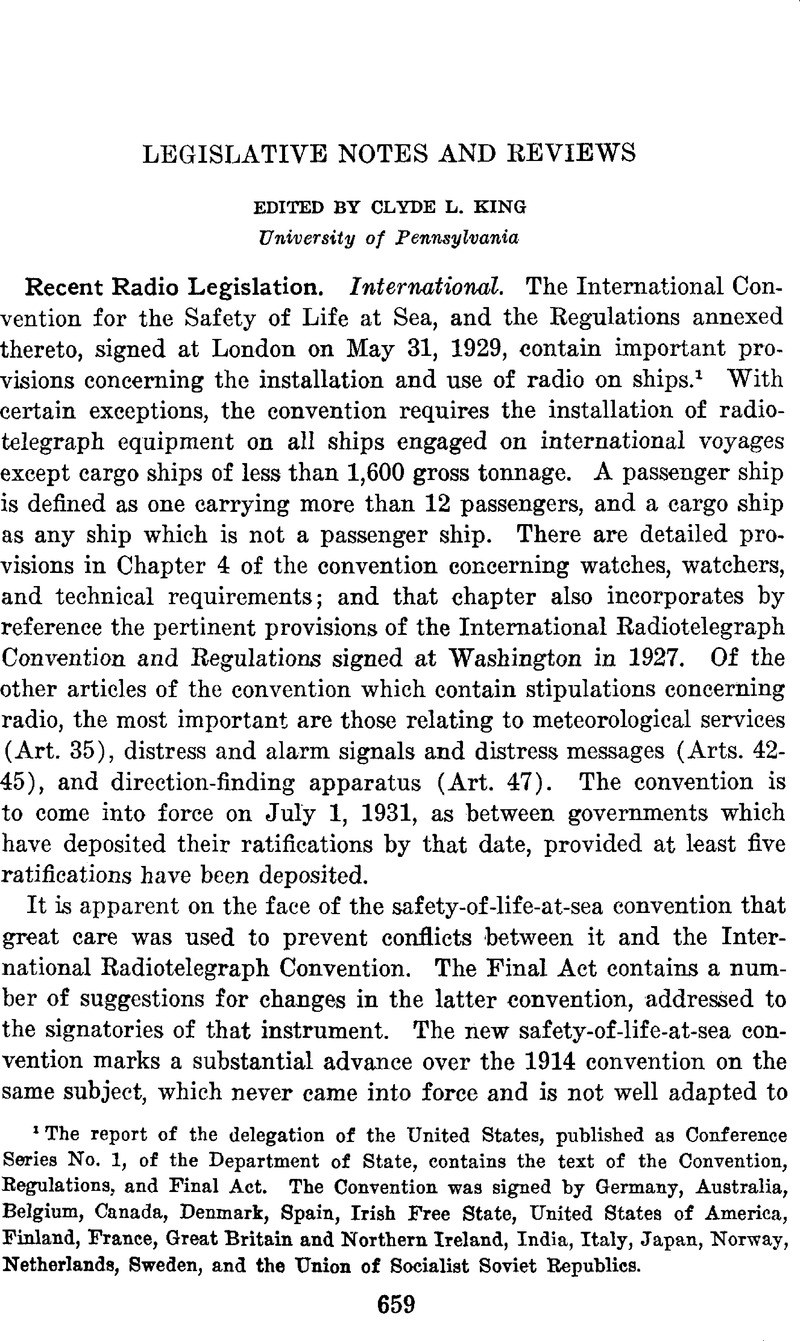No CrossRef data available.
Article contents
Recent Radio Legislation
Published online by Cambridge University Press: 01 August 2014
Abstract

- Type
- Legislative Notes and Reviews
- Information
- Copyright
- Copyright © American Political Science Association 1930
References
1 The report of the delegation of the United States, published as Conference Series No. 1, of the Department of State, contains the text of the Convention, Regulations, and Final Act. The Convention was signed by Germany, Australia, Belgium, Canada, Denmark, Spain, Irish Free State, United States of America, Finland, France, Great Britain and Northern Ireland, India, Italy, Japan, Norway, Netherlands, Sweden, and the Union of Socialist Soviet Republics.
2 Documents de la Conférence Radioélectrique Européenne de Prague, 1929, published by the International Bureau of the Telegraph Union. The final protocol was signed by representatives of the following administrations: Germany, Austria, Belgium, Bulgaria, Denmark, Spain, Estonia, Finland, France, Great Britain, Hungary, Irish Free State, Iceland, Italy, Latvia, Monaco, Norway, the Netherlands, Poland, Roumania, Kingdom of the Serbs, Croats and Slovenes, Sweden, Switzerland, Czechoslovakia, Turkey, and Union of Socialist Soviet Republics. The United States and the Dutch East Indies had observers at the conference.
3 For a discussion of the controversy over the creation of the committee, see an article on “The International Radiotelegraph Conference of Washington” in 22 Amer. Jour. Int. Law 28–49, at pp. 45–46Google Scholar.
4 The writer is indebted to Major William F. Friedman, cryptanalyst in the office of the Chief Signal Officer, for the information concerning the international code of signals.
5 “State and Municipal Regulation of Radio Communication,” by Segal, Paul M. and Spearman, Paul D. P. (Washington, Government Printing Office, May, 1929)Google Scholar.





Comments
No Comments have been published for this article.